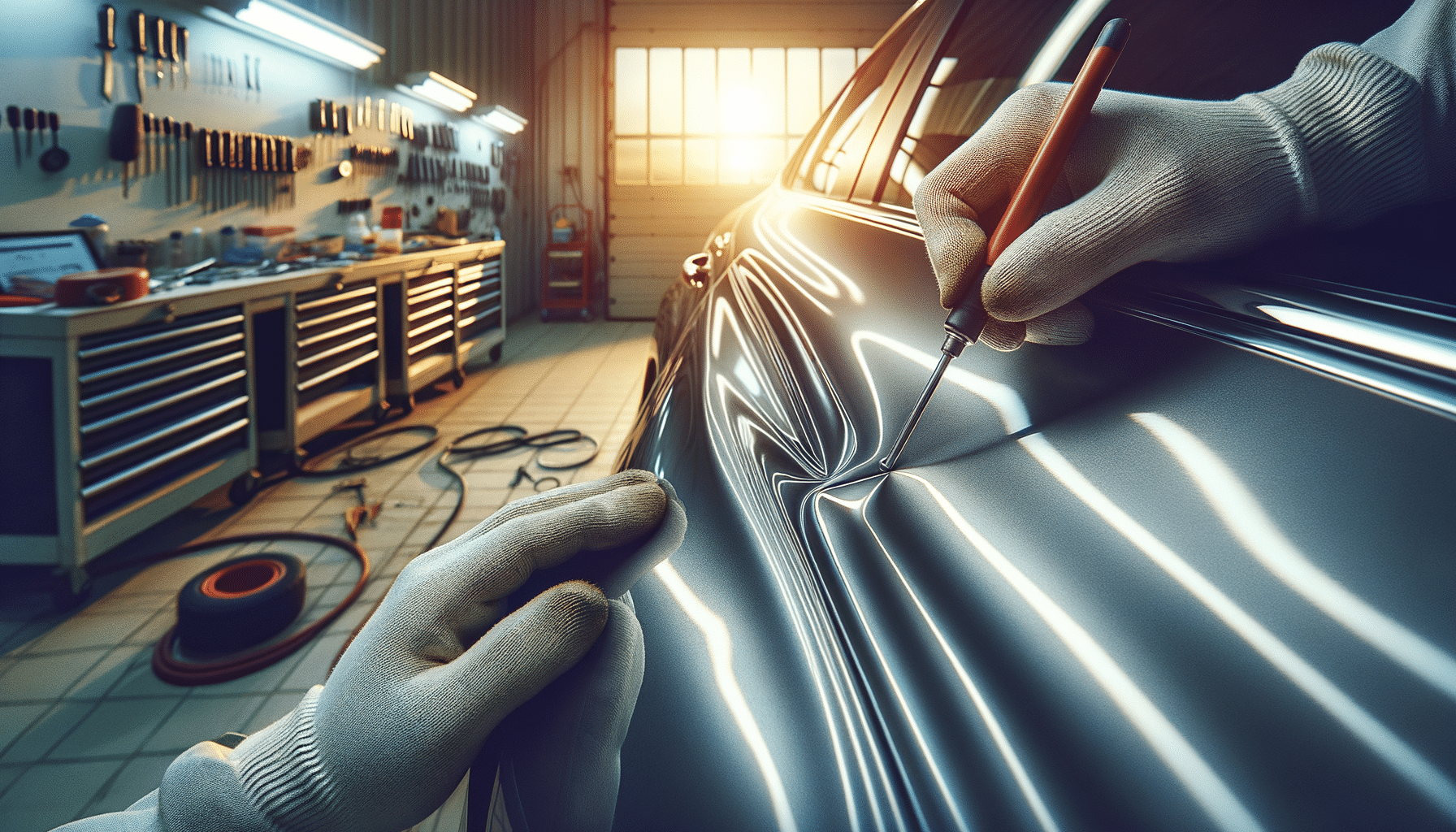
Understanding Paintless Dent Repair: How It May Help Restore Vehicle Panels
Introduction to Paintless Dent Repair (PDR)
Paintless Dent Repair (PDR) is an innovative technique that has gained significant popularity in the automotive industry for its efficiency in removing minor dents and dings from vehicle panels without the need for repainting. The process involves using specialized tools to gently massage the metal back into its original shape, preserving the vehicle’s factory finish. This method is not only cost-effective but also environmentally friendly, as it reduces the need for additional materials and chemicals involved in traditional repair methods.
The relevance of PDR has grown with the increasing value placed on maintaining the original condition of vehicles. Whether it’s a small ding from a shopping cart or a minor dent from a hailstorm, PDR offers a solution that keeps the car looking pristine without altering its paintwork. As consumers become more environmentally conscious, the demand for sustainable repair options like PDR continues to rise, making it an essential service in the automotive repair industry.
How Paintless Dent Repair Works
The process of Paintless Dent Repair is both an art and a science. Technicians use a variety of metal rods and body picks to push the dents out from the underside of the body panel. They also use special lights and reflection boards to see the shadows created by the deformation, which helps them manipulate the metal with precision. This meticulous technique ensures that the metal is returned to its original position without cracking the paint.
One of the key advantages of PDR is its ability to retain the original paint of the vehicle. This is particularly important for preserving the car’s value, as repainting can often lead to mismatched colors and potential issues with paint adhesion. Moreover, PDR is a quicker process compared to traditional methods, often taking just a few hours to complete, depending on the extent of the damage.
It’s important to note that PDR is most effective on minor dents where the paint has not been broken or damaged. It is commonly used for:
- Hail damage repair
- Door dings
- Minor body creases
- Small bumper indentations
When Paintless Dent Repair Is Most Effective
Paintless Dent Repair is not a one-size-fits-all solution, and its effectiveness depends on several factors. It is most suitable for vehicles with minor dents and dings where the paint remains intact. The technique is particularly effective for repairing hail damage, where multiple small dents can be removed efficiently without the need for extensive bodywork.
However, PDR may not be applicable in situations where the paint has been chipped or cracked, or where the dent is located on the edge of a panel. In such cases, traditional repair methods may be required to achieve the desired result. Additionally, the material of the vehicle’s body can influence the success of PDR. While it works well on aluminum and steel panels, certain plastics may not respond effectively to this method.
Before opting for PDR, it’s advisable to consult with a certified technician who can assess the damage and determine the most appropriate repair method. This ensures that the repair is done correctly and that the vehicle retains its value and appearance.
Factors to Consider Before Opting for PDR
When considering Paintless Dent Repair, there are several factors that vehicle owners should take into account to determine if it is the right choice for their needs. Firstly, the location and size of the dent play a crucial role. PDR is ideal for small to medium-sized dents that are not located on the edges of panels, as these areas can be more challenging to repair without affecting the paint.
Another important consideration is the condition of the paint. If the paint is cracked, chipped, or has any damage, PDR may not be suitable, and a more traditional repair approach may be necessary. It’s also essential to choose a reputable and experienced technician who is skilled in PDR techniques to ensure the best results.
Cost is another factor to consider. While PDR is generally more affordable than traditional repair methods, prices can vary based on the extent of the damage and the complexity of the repair. Vehicle owners should obtain multiple quotes and weigh the benefits of PDR against other repair options to make an informed decision.
Lastly, the ability to maintain the vehicle’s original finish and value makes PDR an attractive option for many car owners. By preserving the factory paint, PDR helps in maintaining the aesthetic appeal and resale value of the vehicle.
Conclusion: Embracing Paintless Dent Repair
In conclusion, Paintless Dent Repair offers a highly effective and environmentally friendly solution for restoring minor dents and dings on vehicle panels. By preserving the original paint and finish, PDR helps maintain the vehicle’s value and appearance. It is a quick and cost-effective alternative to traditional repair methods, making it a preferred choice for many car owners.
As the automotive industry continues to embrace sustainable practices, the demand for PDR is expected to grow. Whether dealing with hail damage, door dings, or minor body creases, PDR provides a reliable option for those looking to keep their vehicles in top condition without compromising on quality or environmental impact.
For vehicle owners seeking an efficient way to repair minor dents, Paintless Dent Repair stands out as a practical and forward-thinking solution. By understanding its benefits and limitations, consumers can make informed decisions that align with their needs and values.


